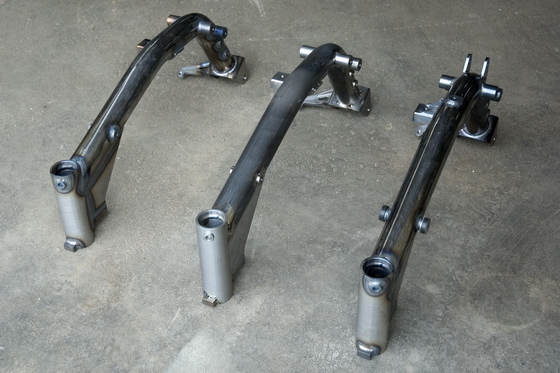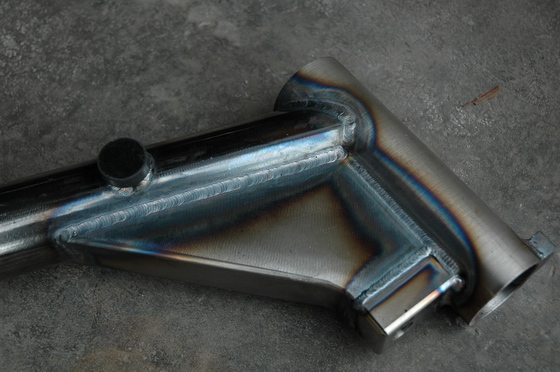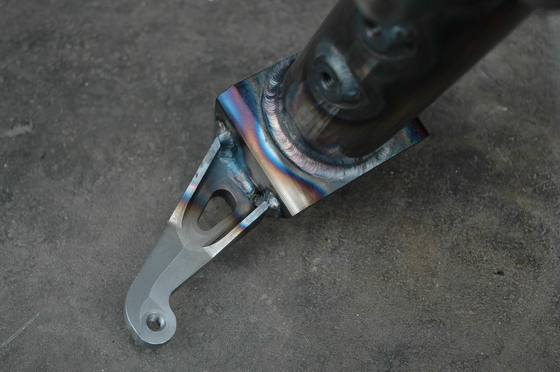Just a brief post to show you part of the work we did during this week. The construction of 3 BOTT XR1 frames that form part of 3 kits. One will go to UK, another one to France and the last one to Costa Rica.
In next picture, the chassis on the right side is already finished and ready for powder coating. The one on the left is almost finished, we still must weld the shock brackets. The third one in the middle is just tack welded waiting to be fully welded.

Next photo shows the welding cordons in the steering head area. Everything we weld is TIG welded.

Here we can see some of the parts that form the frame. All the parts are CNC machined.

See you soon!
Beautiful and interesting work, it reminds me of the old Vincent chassis and its cantilever rear suspension!; but with fixed engine mounts. Would you consider a fixed mounted engine with a better balance factor? Get the chassis sorted our and then the engine vibrations.
Thank you Frank. Yes, for sure I would like to mount the engine fixed if there were less vibrations.
Ok David;
How much did the 1000 Vincent vibrate? Never rode one! Sure, you can sort the vibrations of a V Twin! Look at the Vincent frame (chassis) and then look at its evolution by Fritz Egli central tube design.
Anyway keep me inform with your XR1 proyect.
Regards; Frank
Curious:
I love the design but have a couple questions:
What steel are you using to fabricate your frames, I see they are Tig-Welded are they Chromoly?
I was also curious about the amount of torsional flex at the steering head & swing arm/shock mount. Do you have any shareable data which could display these traits?
Thanks,
MK
Hi Mike,
Thank you for your questions. I am not a big fan of using chromoly for building motorbike frames.
As you probably know, all the steels adequate for building a motorbike frame have the same Young modulus, this means that the stiffness is the same in all of them. Their density is the same also, so the weight is the same in all cases.
So the structural efficiency (stiffness/weight) is the same for any steel frame.
The only difference between chromolly and other steels is that chromolly has a higher breaking strain, but the the maximum stress level on a properly designed frame is way below the elastic limit of the steel you are using, so in practical terms it doesn’t have any advantage to use chromolly on a motorbike frame.
Regarding the frame stiffness, Buell frames are quite different from most of motorbike frames, because both mounting points (front and rear) are through big rubber silentblocks, to isolate the engine vibrations. The lateral stiffness is provided by “tie rods”.
So in order to calculate the stiffness it is necessary to take into account the frame, the rubber mounting points and the tie rods. I did this using non linear finite element models.
In order to validate the calculations, we have a tool for measuring motorbike frames stiffness, and we use strain gauges to study in a proper way the tension levels of our frames.
I wrote a post about this tool when I was building it, in 2008.
http://www.bottpower.com/tool-for-stiffness-measurement/
I would like to write a post about the whole subject, but at the same time this is part of our know-how and in general companies don’t use to share it.